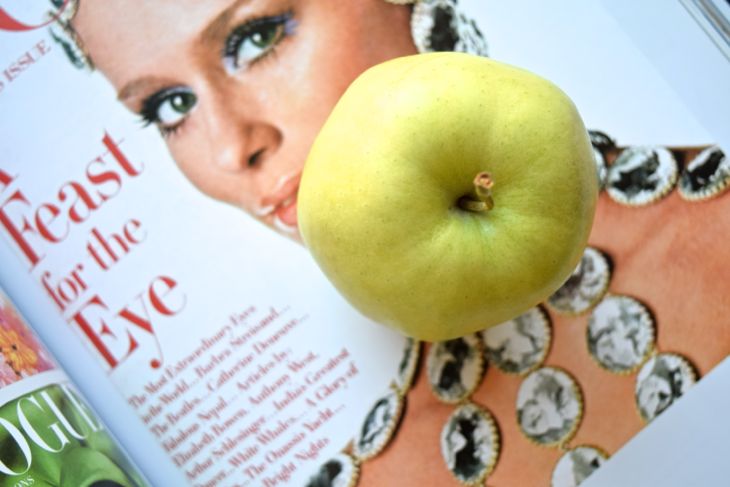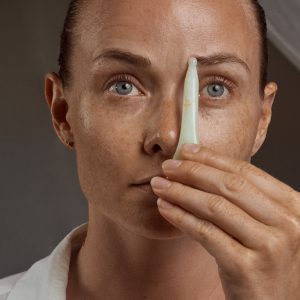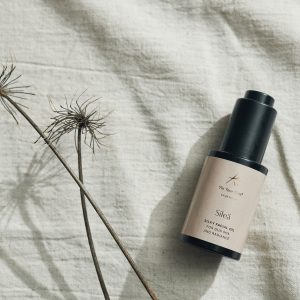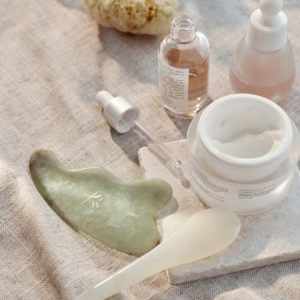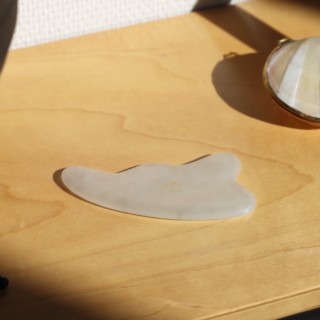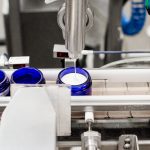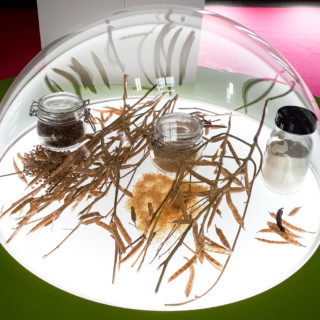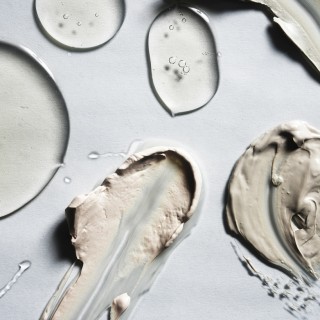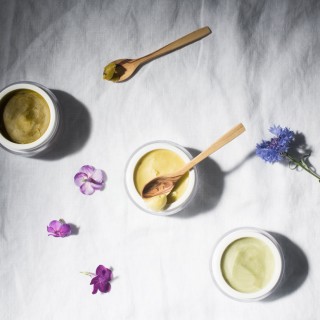Alpha hydroxy acids, otherwise known as AHA-acids or fruit acids, are my favorite. The more I read about them and the more empirical research I conduct using my own skin, the more convinced I am about their numerous benefits for the skin. The results are easily seen – no need for a magnifying glass.
I’ve long felt that a perfect skin care range would be built on a combination of fruit acids, antioxidants and cold pressed vegetable oils. Now, what do you think the products of two of the world’s leading professionals in synthetic skin care, Environ and Exuviance, are based on? Fruit acid and antioxidants. Environ also uses vitamin A. And these ranges are potent – I should know, as I offered myself up as Ginny pig for an Excuviance-facial earlier this summer.
These ranges refer to themselves as so-called medical skin care ranges. Both have the backing scientific research, and a host of medical professionals. But as they are not natural cosmetics, they are not to be found in my bathroom cabinet. It’s made me wonder, however, why no one has created a skin care range that was based on fruit acids and antioxidants, while observing the principles of natural cosmetics. It would easily outstrip any synthetic varieties. The acid content of leave-on skin products is, of course, minimal.
I’ll let you in on a secret: I’ve found two such skin care ranges – in Finland, no less.
Harsh alkaline washing detergents scrub away the skin’s hydrolipid film, which is where the immune defense of the skin is. Bad skin care routines (like skipping toner) and an unbalanced hydrolipid film can lead to shield-like skin, through which nothing permeates. The absorbency of the skin has always been a controversial subject, and the surface and top-most layers of the skin are the ones which most benefit from our care. This is where fruit acids come in.
Fruit acids exfoliate the surface layer of the skin, getting rid of dead skin cells, and stimulating the renewing of the skin. This new, glowing skin is smoother, brighter and more even. The strength of the exfoliation depends on the acidity of the product. Exfoliants containing fruit acids come in varying concentrations; the stronger ones are used by professionals, with lighter concentrations suitable for home-use available for purchase for the customer.
A common misconception about fruit acids seems to be that they are drying, but the fact of the matter is that they are actually moisturizing. And the main reason why I’m a huge proponent of fruit acids is that not only do they improve the absorption of the active ingredients into the skin but, by affecting the pH-levels of the hydrolipid film, they boost skin immunity. They allow, in other words, the moisturizing ingredients, skin-repairing antioxidants and nutrient rich oils to do their job. The results are clearly visible: the skin assumes a healthy glow, wrinkles are smoothed out, impurities decreased, pores minimized, and blockages are almost entirely gone.
When choosing a fruit acid exfoliator, you should think about the type and health of your skin. Exfoliating too often and for too long might lead to dryness and irritation. It is important that all of your skin care products, not just the exfoliator, support the well-being of your skin.
Fruit acids in natural cosmetics are usually from vegetable extracts where they are naturally occurring, but some products also contain glycolic and lactic acids, which enhances their exfoliating properties. Besides fruit acids, the use of vegetable extracts allows us to reap the benefits from a host of secondary components. When choosing a fruit acid exfoliator, make sure to look at the acid content of the product, as very mild concentrations have very little effect – except in leave-on products like moisturizer, toner or serum. The best combination for a fruit acid exfoliator is a small amount of glycolic or lactic acid combined with fruit acid and soothing vegetable extracts.
Fruit acids include glycolic acid (which can be found in sugar cane, pineapple and malva), lactic acid (milk, pumpkin seeds, honey), mandelic acid (bitter almonds), citric acid (lemons and oranges), malic acid (apples and pears), and tartaric acid (grapes and blueberries). These are just a few sources of fruit acids.
I’ve been using some very potent and high quality products containing fruit acid over the summer, and my skin is absolutely perfect now. One can probably never be entirely free of the small hormone-induced bumps and spots, but I have found a way of making them go away in a day or two. Sometimes I’m left staring in the mirror after my evening wash, taken aback by how much younger my skin looks. It’s amazing – I’m more inspired by raw ingredients than ever, and have even enlisted my friends to act as Ginny pigs.
I’ll let you in on my favorite products ASAP!
Translation Katja Nikula




